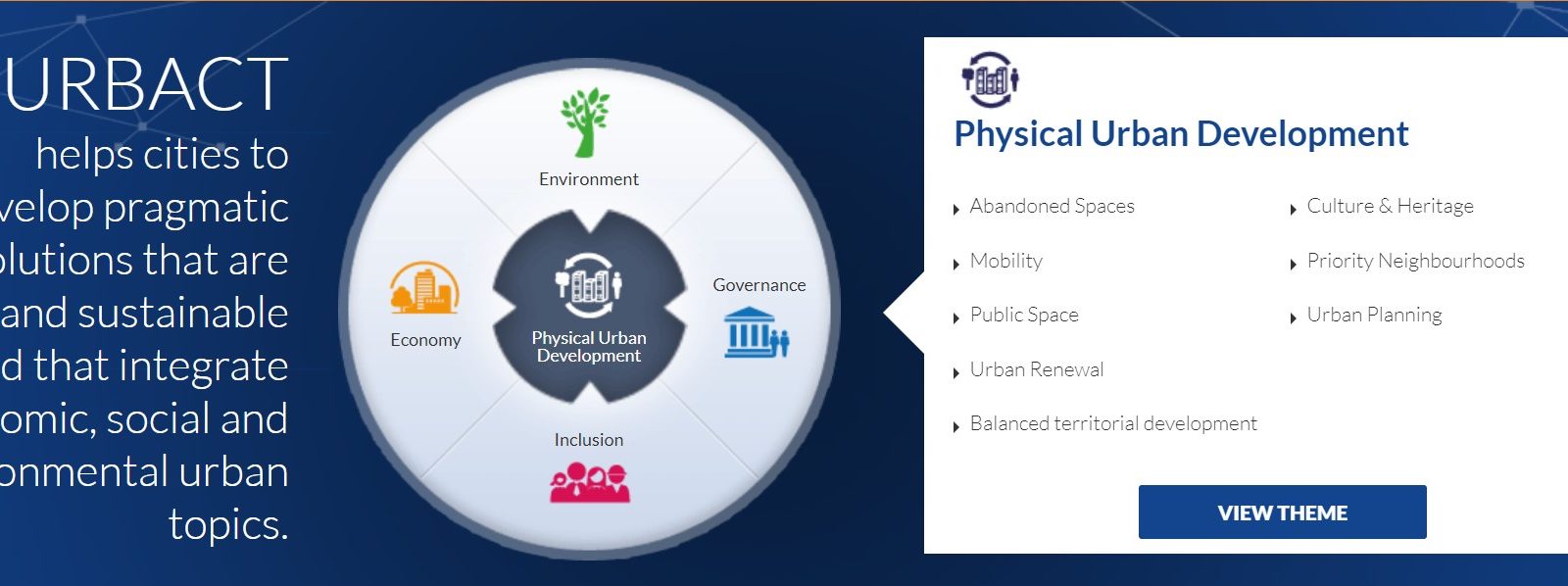Urbact festival ended on 17th of June. For three days, people from all Europe have shared ideas on how to develop our cities.
After two years of experimenting, exchanging and learning, over 150 URBACT cities are ready to share how they made a difference. Delving into 23 urban good practices proven to have made an impact, cities from 25 countries joined forces to understand, adapt and re-use the initiatives in their local contexts.

The logo of the fourth edition of Urbact festival
What is the purpose of Urbact festival ?
“We are looking for architects of the green”, explained Elisa Ferreira, a European Commissioner for cohesion and reforms during the opening of the festival.
Every year, during several days, Urbact gather administrators from different cities , mayors, and investors. Because of covid 19, the fourth edition of this city festival was online. Despite the pandemic and its restriction, Urbact managed to organise its festival on a European scale. Through virtual sessions, Urbact presented current topics like post pandemic resilience, new GIS tools, revitalisation of cities.
Urbact festival is the perfect event for enthusiastic, ambitious and pioneering people. With its networks, Urbact aims to build better and more sustainable cities for tomorrow. For three days, several European countries have celebrated cities and have shared different ways to change current urban policies. It was also the occasion for them to share experiences, ideas, tools, and solutions. With its networks Urbact also provides financial support and the help of experts for your projects.

Elisa Ferreira during the opening speech of the fourth edition of Urbact
An effective communication for cities and digital tools
One of the main topics was the use of GIS tools. Most cities have difficulties separating the what from the how. The Geographic Information System tools are composed of several sources of information. Information about buildings in cities are provided by citizens, maps. In fact, GIS helps you understand the reason for buildings ‘vacancy (noise, pollution…). By using it, you can also determine the potential of reactivation of buildings. It gives an estimation of the potential of these buildings. Mapping is important, with maps you can determine areas with vacant buildings. Regarding your project, GIS, helps users to make smarter decisions in terms of investment. With its maps, GIS can help you realising your project, you can focus on the district that matches with your objective (for example if you want to build appartments for students…) These tools help you to identify vacant buildings. Other tools, like Maptionary can also be an alternative to GIS. This tool extracts the information for you.
The RFSC, is another tool, which is useful for monitoring and setting your objectives. This one, also helps you to determine your order of priority. You can also see if your ambition is too high or not, through your actions. Moreover, it has a set of indicators (Eurostat …), that help you evaluate the level of priority. You can also see the evolution of your objectives, after a few months or one year. Sometimes your ambition will not match with your outcomes. But thanks to this tool you can monitor your progress and outcomes.
As Urbact aims to reinvent cities, it does not only focus on the digital tools we have to create a better tomorrow. Three different cities have presented their strategy to face the covid 19 pandemic. Idrija, Cesena and Viladecans, have all understood the importance of communication. Whether your city is big or small, communication needs to be effective. If Idrija based its strategy on communication, and civil protection, other cities like Cesena have chosen to focus on green spaces. They gave their citizens the opportunity to use them despite the health crisis. On the other hand, Viladecans had a different policy focused on the adaptability of its administration. In fact, all these cities have used communication as a tool to face the crisis. As it was explained, communication is more effective in small cities. Idrija and Viladecans also focused on being attentive to others (elderly, poor families …).

Poverty was one of the topics of the festival. Cities want to tackle poverty, during a conference on digital tools, the strategy of Lisbon to fight poverty was presented. Lisbon developed new tools shared with other cities in order to tackle poverty. Among these new tools, the one called Grand tool, improves the connection between local, and helps in the realisation of elected projects. It gives specific types on how to connect territory. Lisbon has also a lot of data thanks to its websites and maps . Its tools aims to create more mutual understanding between local and a better local development. To do so, their new tools give these tools are shared between different cities. Governance also plays a role and help cities building network, it is more structured and formalised.
Cities are constantly looking for innovative ways of development and change. Urbact gave one more time the opportunity to learn more from one another with interactive sessions and contributors’ stories.

